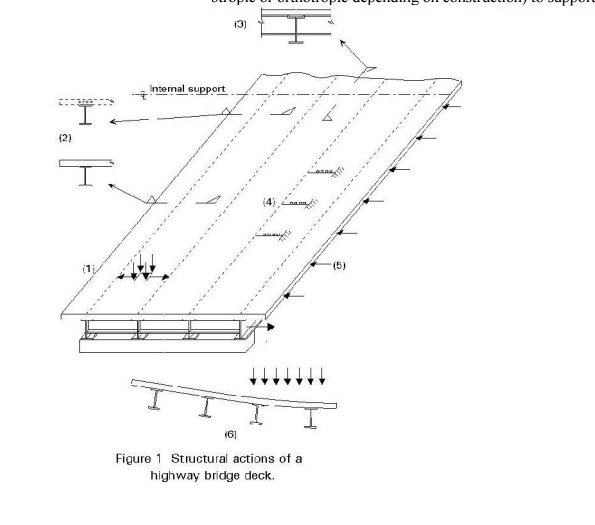Chapter: Civil : Construction Techniques Equipment Practices : Super Structure Construction
Bridge Decks

Bridge Decks
Continuity ensures that whether
or not it has been designed to do so, it will participate in the overall
structural action of the superstructure.
The overall structural actions may include:
·
Contributing to the top flange of the longitudinal
girders, Figure 1(2).
·
Contributing to the top flange of cross girders at
supports and, where present in twin girder and cross girder structures,
throughout the span, Figure 1(3).
·
Stabilising longitudinal and cross girders, Figure
1(4).
·
Acting as a diaphragm to transmit horizontal loads
to supports, Figure 1(5).
·
Providing a means of distribution of vertical load
between longitudinal girders, Figure 1(6).
It may be necessary to take
account of these combined actions when verifying the design of the deck. This
is most likely to be the case when there are significant stresses from the
overall structural actions in the same direction as the maximum bending moments
from local deck actions, e.g. in structures with cross girders where the
direction of maximum moment is along the bridge.
The passage of each wheel load
causes a complete cycle of local bending stresses. The number of significant
stress cycles is, therefore, very much higher for the deck than for the
remainder of the superstructure. In addition, some of the actions of the deck
arising from its participation in the overall behaviour are subject to full
reversal;
an example is the transverse
distribution of vertical load between girders. For both these reasons, fatigue
is more likely to govern the design of the bridge deck than the remainder of
the superstructure.
Related Topics